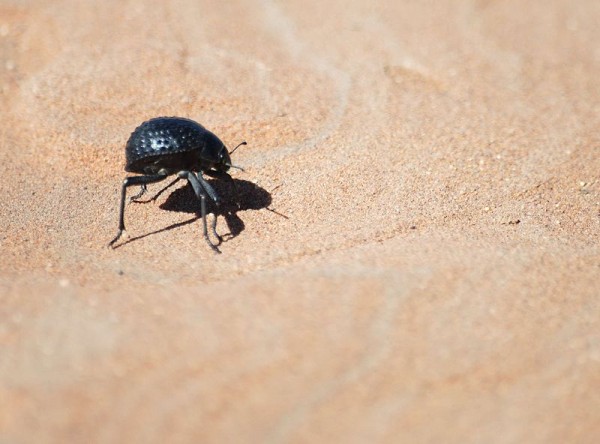By Ana Verayo, | January 25, 2016

The Namib Desert beetle holds the secret to frost preventing technology.
Scientists have created this breakthrough technology using a special material that can reduce frost that is crucial for airplane wings and windshields.
A team from Virginia Tech has discovered how to limit frost growth inspired by one of nature's most tenacious creatures, the Namib Desert beetle. The beetle is known for its incredible ability for survival and water collection and retention, as it dwells on one of the hottest and driest places on the planet.
Like Us on Facebook
There are no bodies of water on the Namib Desert which is located on the coastal region of southwestern Africa. The beetle, also known as the fogstand beetle can survive by capturing water from air, on its distinct bumpy shell. These bumps are important to attract water moisture droplets where its smoother parts can also repel moisture. These opposing surface textures can help channel the collection of water droplets and direct it to the mouth of the beetle.
When these tiny drops of water freeze, they can form bridges that connect with nearby drops of water. When these drops of water are far from each other but are kept in small surface areas, frost will not form.
According to Jonathan Boreyko of Virgina Tech, fluids can exist in high and low pressures, however, ice can suck in all the humidity when the vapor pressure of the ice is lower than the vapor pressure of the water. Due to this pressure difference, ice starts to form, however, if designed and manipulated the right way, this same effect can create a dry zone instead as opposed to frost.
Boreyko along with a team from Oak Ridge National Laboratory, conducted tests for this anti-frost mechanism in limited conditions, where they hope to apply this technology on an industrial scale.
Boreyko says that they have successfully created a dry zone around one piece of ice. Dew drops prefer to grow around hydrophilic dots where these dots are specifically placed apart far enough from each other. When one drop freezes, the other drops will not freeze into ice and spread since nearby drops are limited to a certain distance from each other. When this happens, drops evaporate completely, creating this dry zone instead of ice.
The team believes that this technology can save resources such as time, money and energy for aerospace industries and wind energy structures. To date, toxic chemicals are used to defrost airplane wings and wind turbines.
This new study is published in the journal Scientific Reports.
-
Use of Coronavirus Pandemic Drones Raises Privacy Concerns: Drones Spread Fear, Local Officials Say

-
Coronavirus Hampers The Delivery Of Lockheed Martin F-35 Stealth Fighters For 2020

-
Instagram Speeds Up Plans to Add Account Memorialization Feature Due to COVID-19 Deaths

-
NASA: Perseverance Plans to Bring 'Mars Rock' to Earth in 2031

-
600 Dead And 3,000 In The Hospital as Iranians Believed Drinking High-Concentrations of Alcohol Can Cure The Coronavirus

-
600 Dead And 3,000 In The Hospital as Iranians Believed Drinking High-Concentrations of Alcohol Can Cure The Coronavirus

-
COVID-19: Doctors, Nurses Use Virtual Reality to Learn New Skills in Treating Coronavirus Patients







